General description
Amyloid beta A4 protein (UniProt P05067; also known as ABPP, Alzheimer disease amyloid protein, Amyloid precursor protein, APP, APPI, Cerebral vascular amyloid peptide, CVAP, PN-II, PreA4, Protease nexin-II) is encoded by the APP (also known as A4, AD1) gene (Gene ID 351) in human. APP undergoes extensive post-translational modification including glycosylation, phosphorylation, and tyrosine sulfation, as well as many types of proteolytic processing to generate peptide fragments. APP is proteolytically processed under normal cellular conditions by alpha-secretase or beta-secretase to generate and release soluble APP peptides, S-APP-alpha and S-APP-beta, and the retention of corresponding membrane-anchored C-terminal fragments, C80, C83 and C99. Subsequent processing of C80 and C83 by gamma-secretase yields P3 peptides. In Alzheimer s disease processing of C99 generates amyloid-beta 40 (Abeta40) and amyloid-beta 42 (Abeta42) that form amyloid plaques. Beta-amyloid peptides are lipophilic metal chelators with metal-reducing activity. They bind transient metals such as copper, zinc and iron. APP can also be cleaved by caspases during neuronal apoptosis. Cleavage at Asp-739 by either caspase-6, -8 or -9 results in the production of the neurotoxic C31 peptide and the increased production of beta-amyloid peptides. In addition to its obvious role in Alzheimer′s disease, the most-substantiated role for APP is in synaptic formation and repair. Its expression is upregulated during neuronal differentiation and after neural injury.
Specificity
This antiserum detects the N-terminal fragment of AEP-cleaved APP at residue 373 (373N), but not the C-terminal fragment (373C) or uncleaved APP. The 373 numbering is based on isoforms L-APP677 and APP695/PreA4 695 (UniProt P05067-3 and P05067-4). Equivalent site is also present in isoforms APP770 (Asn448; P05067-1), L-APP696 (Asn392; P05067-5), APP714 (Asn392; P05067-6), L-APP733 (Asn429; P05067-7), APP751/PreA4 751 (Asn429; P05067-8), L-APP752 (Asn448; P05067-9), APP639 (Asn317; P05067-10), and isoform 11 (Asn424; P05067-11). Cleavage site is not present in APP305 (P05067-2).
Immunogen
Epitope: extracellular domain
Synthetic peptide corresponding to the C-terminal end sequence of AEP-cleaved APP 373N fragment.
Application
Anti-APP, AEP-cleaved (373N), Cat. No. ABN1643, is a highly specific rabbit polyclonal antibody that targets the N-terminal fragment of AEP-cleaved APP at residue 373 (373N) and has been tested in Immunohistochemistry and Western Blotting.
Immunohistochemistry Analysis: A 1:200 dilution from a representative lot detected APP N-terminal fragment 373N immunoreactivity in formalin-fixed, paraffin-embedded 5XFAD familial AD transgenic mouse brain tissue sections (Courtesy of Dr. Keqiang Ye, Emory University, U.S.A.).
Western Blotting Analysis: A 1:1,000 dilution from a representative lot detected APP N-terminal fragment 373N in brain tissue lysates from 5XFAD familial AD transgenic mice, but not from AEP-knockout 5XFAD mice (Courtesy of Dr. Keqiang Ye, Emory University, U.S.A.).
Western Blotting Analysis: A representative lot detected an increased APP N-terminal fragment 373N in AEP-containing brain fractions from 5-month-old 5XFAD familial AD transgenic mice than wild-type mice (Zhang, Z., et al. (2015). Nat. Commun. 6:8762).
Western Blotting Analysis: A representative lot detected an age-dependent increase brain APP N-terminal fragment 373N in mice. Upregulated APP 373N level was seen in human AD brain samples when compared with age-matched non-AD brains (Zhang, Z., et al. (2015). Nat. Commun. 6:8762).
Western Blotting Analysis: A representative lot detected AEP-cleaved recombinant GST-APP N-terminal fragment, but not the uncleaved GST-APP or the cleaved C-terminal fragment (Zhang, Z., et al. (2015). Nat. Commun. 6:8762).
Western Blotting Analysis: A representative lot detected AEP-cleaved APP N-terminal fragment 373N in untransfected, but not AEP siRNA-transfected, HEK293 cells.
Research Category
Neuroscience
Quality
Evaluated by Western Blotting in GST-APP-373 transfected cell lysate.
Western Blotting Analysis: A 1:1,000 dilution of this antiserum detected APP(1-585), but not APP(1-373) or full-length APP, GST fusion exogenously expressed in HEK293 cells.
Target description
~52/50 kDa observed. 48.53/48.53/48.53/42.35/42.35/46.40/46.40/48.53/34.14/47.87 (cleaved APP770/L-APP677/APP695/L-APP696/APP714/L-APP733/APP751/L-APP752/APP639/isoform 11 with signal peptide a.a. 1-17 removed) calculated. Uncharacterized bands may be observed in some lysate(s).
Physical form
Rabbit polyclonal antibody serum with 0.05% sodium azide.
Unpurified.
Storage and Stability
Stable for 1 year at -20°C from date of receipt.
Handling Recommendations: Upon receipt and prior to removing the cap, centrifuge the vial and gently mix the solution. Aliquot into microcentrifuge tubes and store at -20°C. Avoid repeated freeze/thaw cycles, which may damage IgG and affect product performance.
Other Notes
Concentration: Please refer to lot specific datasheet.
Disclaimer
Unless otherwise stated in our catalog or other company documentation accompanying the product(s), our products are intended for research use only and are not to be used for any other purpose, which includes but is not limited to, unauthorized commercial uses, in vitro diagnostic uses, ex vivo or in vivo therapeutic uses or any type of consumption or application to humans or animals.
biological source: rabbit. Quality Level: 100. antibody form: serum. antibody product type: primary antibodies. clone: polyclonal. species reactivity: human, mouse. species reactivity (predicted by homology): porcine (based on 100% sequence homology), nonhuman primates (based on 100% sequence homology), canine (based on 100% sequence homology), guinea pig (based on 100% sequence homology). technique(s): immunohistochemistry: suitable, western blot: suitable. NCBI accession no.: NP_958817. UniProt accession no.: P05067. shipped in: ambient. target post-translational modification: unmodified. Gene Information: human ... APP(351). Storage Class Code: 12 - Non Combustible Liquids. WGK: WGK 1. Flash Point(F): Not applicable. Flash Point(C): Not applicable.- UPC:
- 51203801
- Condition:
- New
- Weight:
- 1.00 Ounces
- HazmatClass:
- No
- WeightUOM:
- LB
- MPN:
- ABN1643












